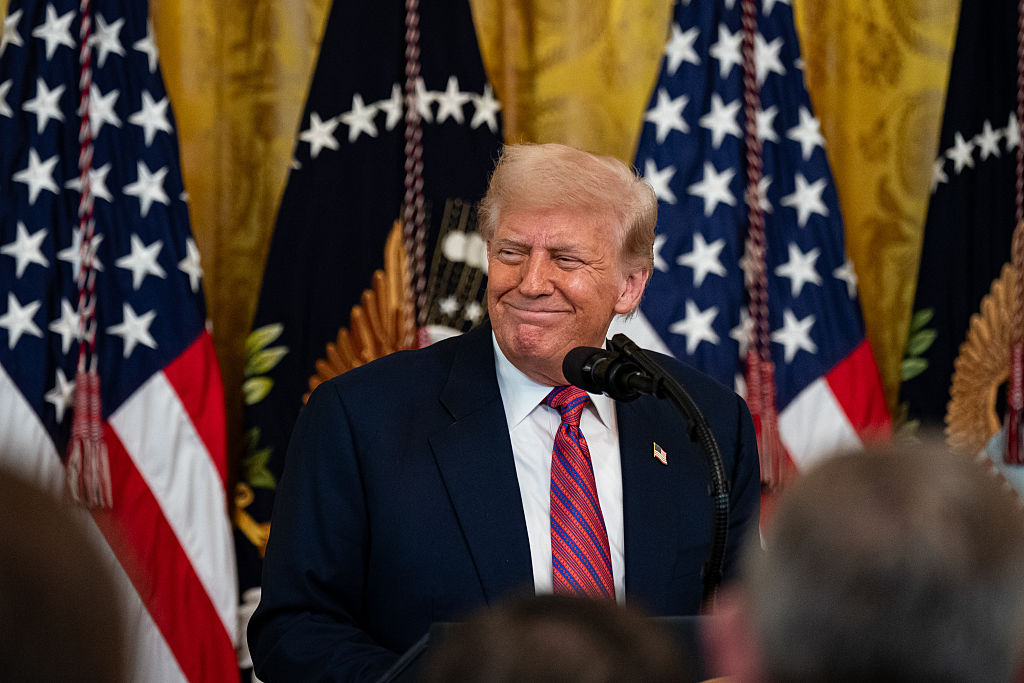Are Stocks Cruising for a Bruising?
Most U.S. stocks are overvalued today. Throw in concerns about weakening global economic growth, and the market looks vulnerable.

Is the stock market too richly priced? I tend to be an optimist, but I’m beginning to think the answer is yes. Why? I’ve been reading a truly scary piece of research from Jim Paulsen, chief investment strategist at Wells Capital Management. Paulsen, a longtime stock market bull, finds that based on earnings over the previous 12 months, the average U.S. issue trades at a post-World War II high. His findings come at a time when world stock, bond, currency and commodity markets are being rocked by fears over anemic global growth.
In the late 1990s, as large-capitalization U.S. stocks advanced and technology shares in particular lifted off, the extreme overvaluation was clear to anyone who cared to look. Standard & Poor’s 500-stock index traded at a price-earnings ratio of 34, a post-war record, and the tech-laden Nasdaq traded at an insane P/E of 152.
It’s different this time. The S&P 500 changes hands today at 19 times trailing profits. That’s higher than the long-term average of 15.5, but it’s hardly alarming. The trouble this time is that the average stock is trading at a P/E of just over 20—higher than at any time since at least World War II. “Everything is overvalued,” Paulsen tells me.
From just $107.88 $24.99 for Kiplinger Personal Finance
Become a smarter, better informed investor. Subscribe from just $107.88 $24.99, plus get up to 4 Special Issues

Sign up for Kiplinger’s Free Newsletters
Profit and prosper with the best of expert advice on investing, taxes, retirement, personal finance and more - straight to your e-mail.
Profit and prosper with the best of expert advice - straight to your e-mail.
An overvalued market, in and of itself, rarely triggers a bear market. Signs of an impending recession or a financial cataclysm generally bubble up in the early stages of a selloff. That makes the current situation dicey. Global stock markets are being roiled by plunging oil prices, falling Treasury bond yields, and a soaring dollar and Swiss franc (and, conversely, a weak euro).
The P/Es of most stocks are usually lower than the P/E of the S&P index, which consists of 500 mostly strong companies. Stocks in the index are weighted by their market values (share price times the number of shares outstanding). So, for example, Apple has the largest weighting, nearly 4%, in the S&P.
One caveat: All of Paulsen’s figures for the average stock are as of June 2014, the most recent date for which he could compute average P/Es. Paulsen says he sees nothing to suggest P/Es have changed appreciably since. (At its January 16 close of 2015, the S&P 500 is 3% above where it closed on June 30.)
Stock pickers have been grumbling for years that the market isn’t distinguishing between superb companies and low-quality firms. Drawing an analogy with cars, it would be a market in which Chevys and Fords fetch BMW prices.
Typically, only best-of-breed companies command lofty price-earnings ratios. (You compute a stock’s P/E by dividing its stock price by its earnings per share.)
But recently, Paulsen’s data shows, lower-quality firms--those, for example, with heavy debt loads, a lot of competition and poor outlooks—have been awarded P/Es that are almost as high as the P/Es of cream-of-the-crop companies. “A lot of our guys complain that values are so tightly bunched that it’s hard to be a stock picker,” Paulsen says of Wells’s money managers.
Utilities, providers of consumer staples and shares of energy and other commodity companies typically trade at discounted P/Es. Today, thanks to the plunge in oil prices, only energy stocks trade at significant discounts to the S&P’s P/E.
Paulsen looked at stock prices compared to cash flow (essentially earnings plus depreciation and other noncash charges)—and found the same worrisome record high ratios among average stocks. The average stock now trades at about 15 times cash flow.
Next he considered share price in comparison with a company’s book value, or assets minus liabilities. On this basis, stocks were pricier in only two years, 1969 and 1998. Ugly bear markets followed not long after both periods.
In past times when the average stock’s P/E reached sky-high levels, the aftermath usually, though not always, was disastrous. In 2005 and 1998, high average P/Es preceded bear markets by two years. The 1969 peak likewise signaled a huge drop in stocks. The other average P/E high-water mark was reached in 1962—and that bull market continued for years.
What to do? The most obvious strategy is to buy stocks of the biggest and highest-quality companies. If all cars sell for the same price, you might as well buy a BMW. When the best companies are as cheap as the rest, buying the best is common sense. “Other things being equal, you go to big and survivable,” Paulsen says.
Foreign stocks, especially emerging-markets issues, are cheaper than U.S. stocks. So look beyond the U.S. in spite of the big headwinds Europe and many developing nations face.
Most important, don’t overdo stocks. With the current bull market approaching its sixth anniversary, it’s time to exercise extra caution.
Steve Goldberg is an investment adviser in the Washington, D.C., area.
Profit and prosper with the best of Kiplinger's advice on investing, taxes, retirement, personal finance and much more. Delivered daily. Enter your email in the box and click Sign Me Up.

-
 AI Stocks Lead Nasdaq's 398-Point Nosedive: Stock Market Today
AI Stocks Lead Nasdaq's 398-Point Nosedive: Stock Market TodayThe major stock market indexes do not yet reflect the bullish tendencies of sector rotation and broadening participation.
-
 Top Tech Gifts to Grab at Walmart Before Christmas
Top Tech Gifts to Grab at Walmart Before ChristmasBig savings on Apple, Bose, HP, Vizio and more while there's still time to shop.
-
 AI Appliances Aren’t Exciting Buyers…Yet
AI Appliances Aren’t Exciting Buyers…YetThe Kiplinger Letter Artificial intelligence is being embedded into all sorts of appliances. Now sellers need to get customers to care about AI-powered laundry.
-
 What the Rich Know About Investing That You Don't
What the Rich Know About Investing That You Don'tPeople like Warren Buffett become people like Warren Buffett by following basic rules and being disciplined. Here's how to accumulate real wealth.
-
 How to Invest for Rising Data Integrity Risk
How to Invest for Rising Data Integrity RiskAmid a broad assault on venerable institutions, President Trump has targeted agencies responsible for data critical to markets. How should investors respond?
-
 What Tariffs Mean for Your Sector Exposure
What Tariffs Mean for Your Sector ExposureNew, higher and changing tariffs will ripple through the economy and into share prices for many quarters to come.
-
 How to Invest for Fall Rate Cuts by the Fed
How to Invest for Fall Rate Cuts by the FedThe probability the Fed cuts interest rates by 25 basis points in October is now greater than 90%.
-
 Are Buffett and Berkshire About to Bail on Kraft Heinz Stock?
Are Buffett and Berkshire About to Bail on Kraft Heinz Stock?Warren Buffett and Berkshire Hathaway own a lot of Kraft Heinz stock, so what happens when they decide to sell KHC?
-
 How the Stock Market Performed in the First 6 Months of Trump's Second Term
How the Stock Market Performed in the First 6 Months of Trump's Second TermSix months after President Donald Trump's inauguration, take a look at how the stock market has performed.
-
 Fed Leaves Rates Unchanged: What the Experts Are Saying
Fed Leaves Rates Unchanged: What the Experts Are SayingFederal Reserve As widely expected, the Federal Open Market Committee took a 'wait-and-see' approach toward borrowing costs.
-
 Fed Sees Fewer Rate Cuts in 2025: What the Experts Are Saying
Fed Sees Fewer Rate Cuts in 2025: What the Experts Are SayingFederal Reserve The Federal Reserve cut interest rates as expected, but the future path of borrowing costs became more opaque.